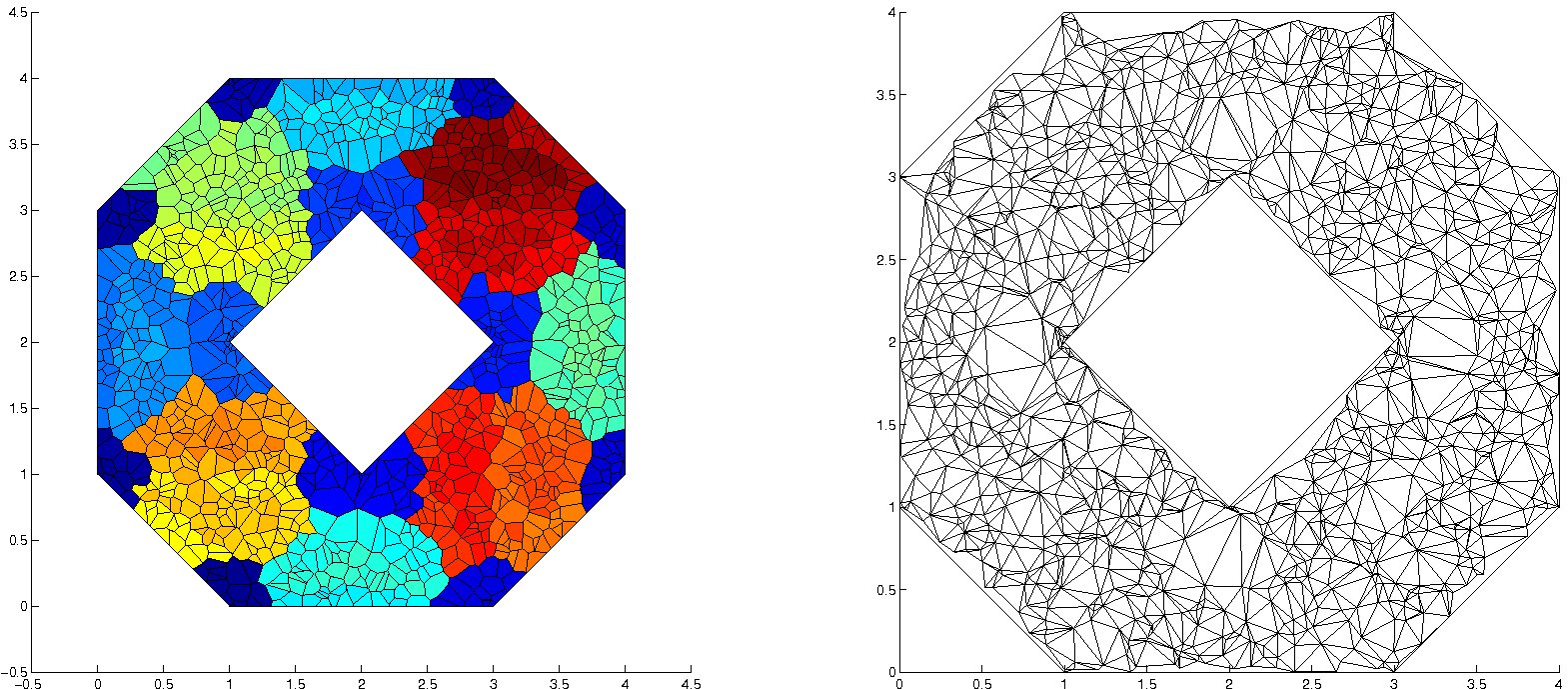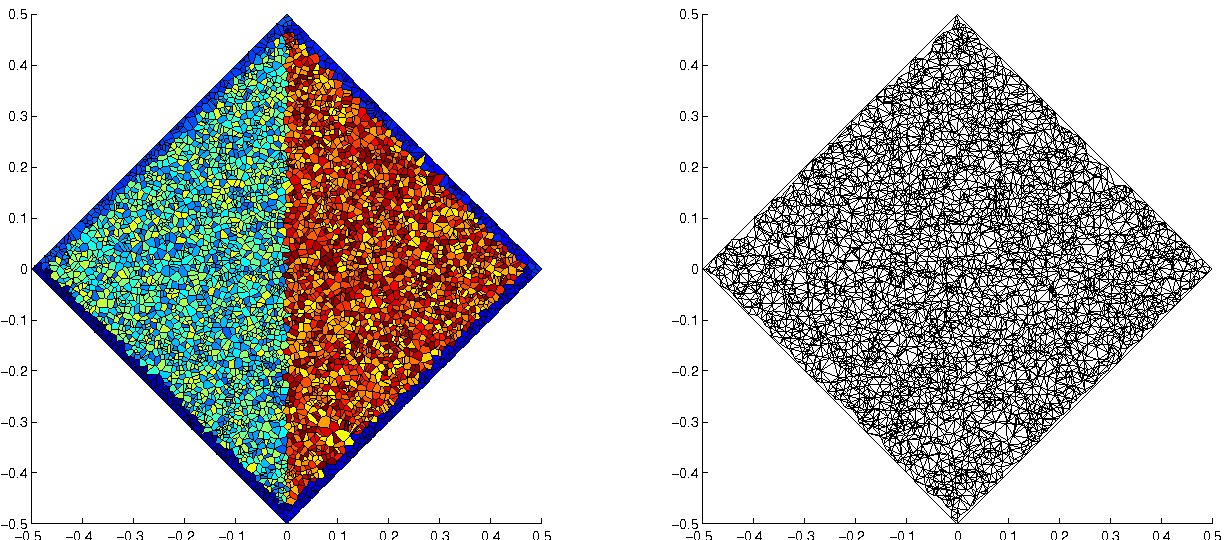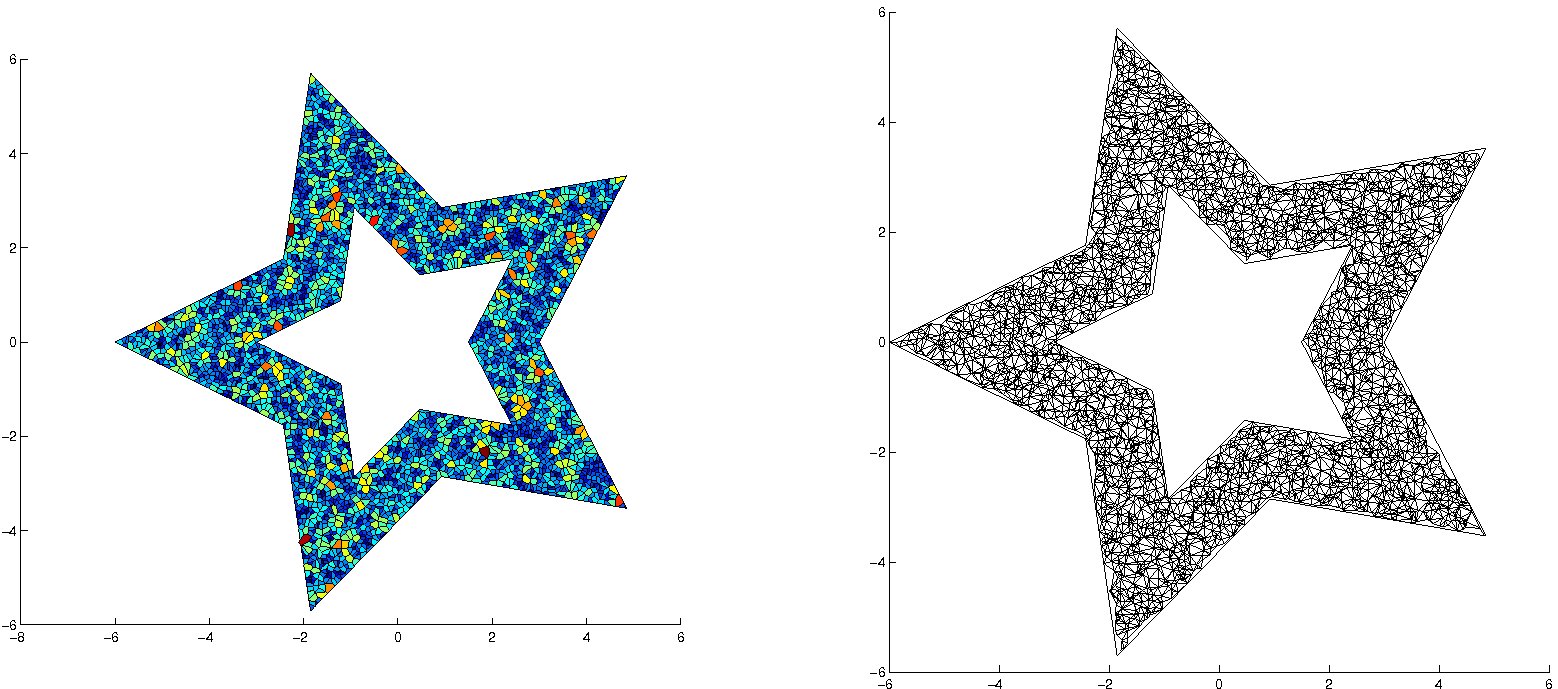 |
|
 |
Institute of Engineering and Computational Mechanics |
 |
Voronoi
Decomposition of Non-Convex Polygonal Surfaces |
 |
|
 |
 |
 |
 Back Back
|
 |
 |
|
Description
Some discretization methods, e.g. the Discrete Element Method require a
decomposition of non-convex polygons into smaller convex polygons. If the
decomposition is to be carried out automatically, a Voronoi-decomposition is a
possible approach.
The difficult part of meshing a closed surface is the placement of the
Voronoi-centers (points) in a way that the edges of the Voronoi-cells coincide
exactly with the edges of the polygon which is to be decomposed. This is
achieved by a mirroring of Voronoi-centers in the vicinity of the edges.
The position of the Voronoi-centers and thus the size of the Voronoi-cells is
determined by means of statistical distribution functions.
The polygon to be meshed is first divided up into large triangles which are then
meshed subsequently. For the meshing of the triangles a mapping is used to
calculate barycentric coordinates based on a rectangular distribution. Finally
local corrections are applied at the edges and corners of the non-convex
polygon.
The following color coded images are examples for some possible decompositions.
Thereby, colors are assigned to the Voronoi-cells that match the time history of
the placement of Voronoi-centers. The time is coded from red to blue.




If the area of the Voronoi-cells is color coded linearily one can see the pretty uniform
area distribution which is independent of the shape of the global non-convex
polygon.

Contact
|
|
|
|
|





